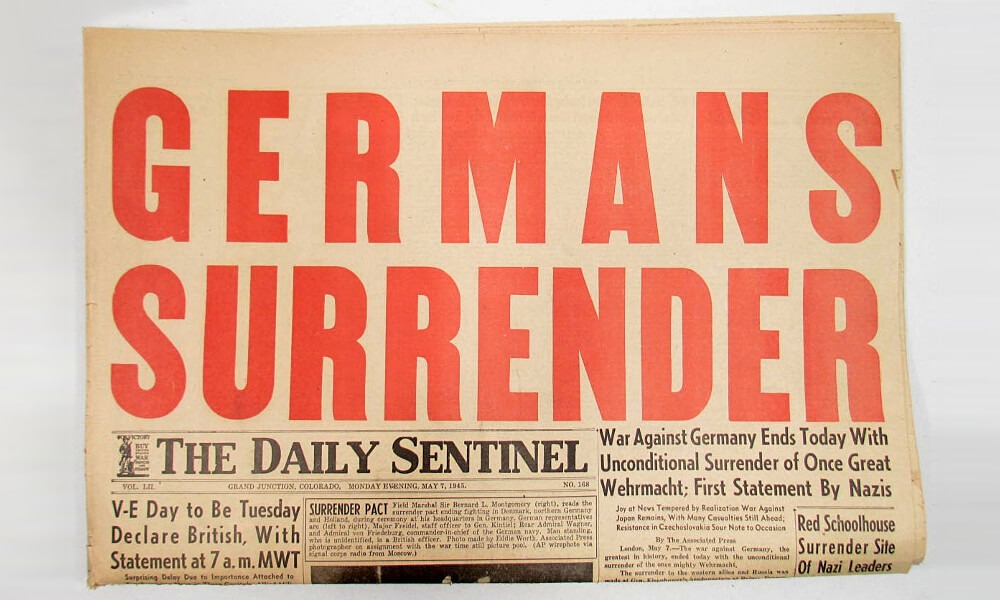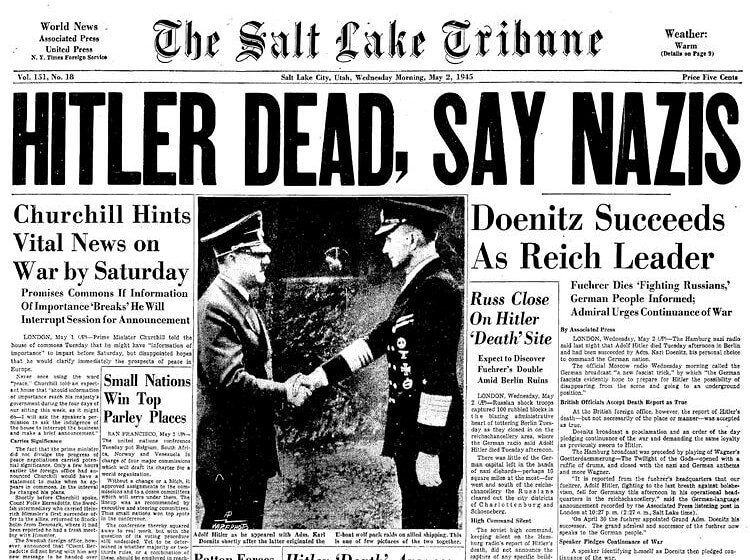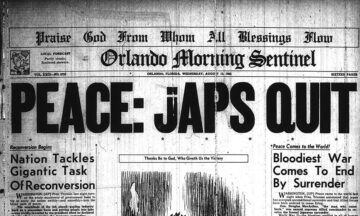As we remember and celebrate on this, the 75th anniversary of what we call V-E Day, the ending of the Second World War on the European continent … I feel led to share highlights of the events as they unfolded over the period between mid-April and mid-May 1945:
The beginning of the War’s end would come with the surrender of Nazi Germany in early May of 1945. However, less than a month prior, America would mourn the passing of President Franklin Delano Roosevelt — still today the longest-serving United States president ever — on April 12th, just 27 days before victory celebrations would begin. He had been sworn in for his fourth term in office the previous January, following years of shepherding America’s leadership role in the savage battle of freedom vs. tyranny.
The president died at what was known as the Little White House, located in Warm Springs, Georgia, where he had gone for a period of rest as his health continued to decline. Before day’s end, Vice-President Harry S. Truman would be sworn in as the next, the 33rd President of the United States of America.
The next morning, Mr. Roosevelt’s flag-draped coffin was loaded onto the presidential train and transported to the Nation’s Capital, where a procession through the streets of the city and funeral ceremony at the White House took place on April 14th. FDR, as he was commonly referred to, was laid to rest at the Roosevelt family estate on the banks of the Hudson River in Hyde Park, New York.
On the battlefields of Europe, as the calendar progressed through the month of April, Allied Forces continued to destroy the last bastions of Nazi defenses … American and British from the west and Soviet troops from the east.
As they advanced closer to the heart of the Third Reich, they would soon recognize the true scale of the Holocaust, coming upon one after another, the Nazi concentration camps … names like Buchenwald, Bergen-Belsen and Dachau.
By the 25th of April, all German forces had departed Finland while, with Allied forces closing in on northern Italy, Italian partisans capture the city of Milan. Two days later, those same partisans captured Italian dictator Benito Mussolini, then executed him the next day, April 28th. Things were moving fast … through unauthorized secret negotiations, a surrender agreement for all German troops remaining in Italy and Austria was signed on the 29th.
The last day of April, with the war still continuing but recognizing the end was near, the fuhrer … German dictator — the founder and leader of the Third Reich — Adolf Hitler, along with Eva Braun, his long-term partner whom he had married only two days earlier, committed suicide in the bunker where they had lived through the latter portion of the war. At the same time, fighting that had been raging around the German cities of Nuremberg and Hamburg was concluding with occupation by American and British forces … and the battle of Berlin going on just above the bunker with the Soviet army surrounding the city.
In his will, Hitler had named his successors: 89-year-old Grand Admiral Karl Doenitz as President of Germany and Joseph Goebbels the new Chancellor of Germany. However, Goebbels committed suicide the following day, leaving Doenitz as the sole leader of Germany.
Looking at the below map, as the world entered May, the Axis/Nazi forces still held the areas shown in blue … Denmark, Norway, a coastal portion of the Netherlands and North West Germany, as well as the area stretching from the westernmost sections of Poland and Czechoslovakia down through Austria into very northern Italy … and the city of Berlin. However, just one day later the commander of the Berlin Defense Area would unconditionally surrender the city to the Soviet “Red Army.”
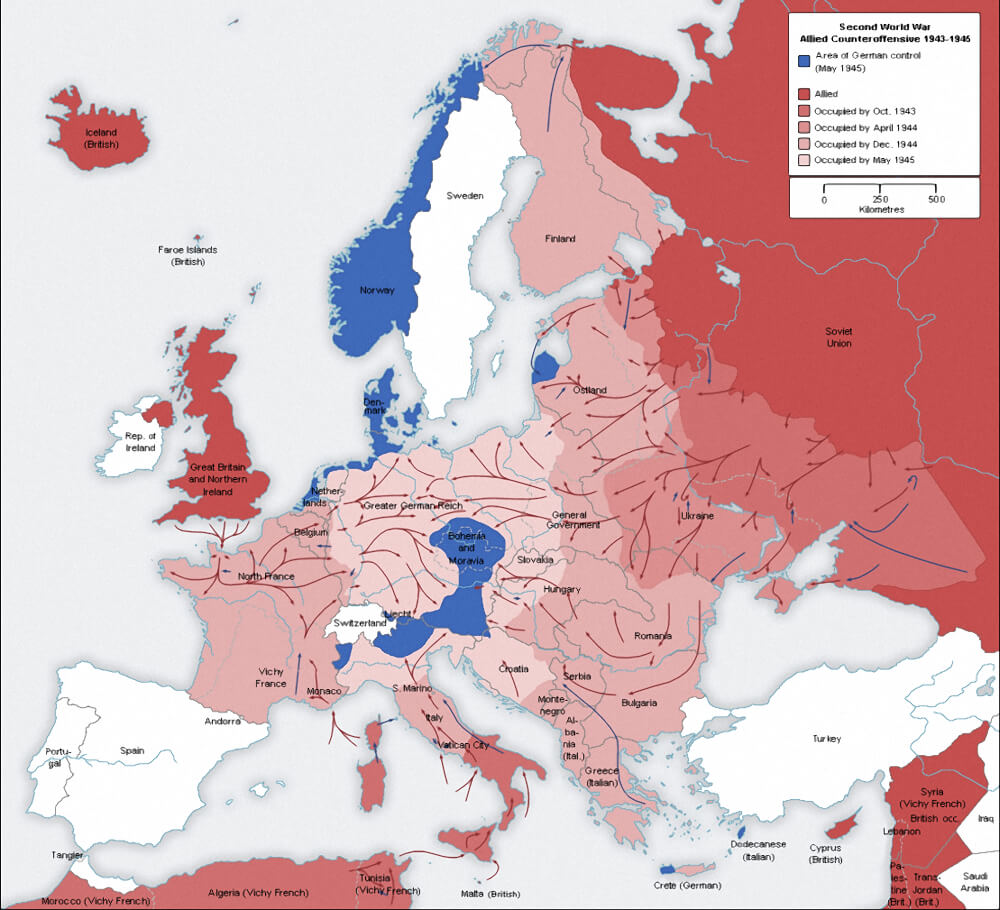
On the 4th of May, British Field Marshall Bernard Montgomery received the unconditional military surrender of all German land, sea and air forces — involving at least 1,000,000 men — which included all ships, in the territory extending from Norway down through coastal Netherlands. Later the same day, the German commanders of the region to the east and northeast of Switzerland — Bavaria and Austria — surrendered.
On May 5th, Admiral Doenitz, who was the Supreme Commander of the German Navy during the War, ordered all U-boat commanders to cease offensive operations and return to their bases. I’ll note here that a part of all negotiations was the Allied leadership’s stipulation that U-boat commanders be instructed to surrender, not scuttle their ships as was the long-standing German naval tradition. To drive home Admiral Doenitz’s order, the next day Allied aircraft sunk five U-boats which obviously were not headed to port.
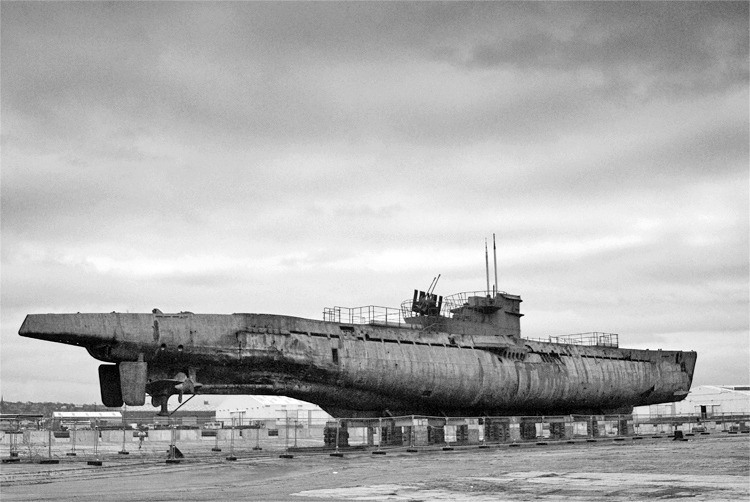
The U-boat — which literally means “undersea boat” — submarine role in the Second World War is a story in itself. The Germans built well over a thousand of these potent vessels during the WWII period, the majority of which would operate in the North Atlantic … with the mission of impeding the transportation of strategic supplies from the United States and Canada to Great Britain and the warfront. Between the beginning of President Roosevelt’s “Lend-Lease” program in early 1941 and the end of hostilities in 1945, approximately 3,000 Allied ships where sunk by U-boats, mostly from torpedo strikes. Most were merchant ships, only 175 being warships.
The worst was in the early days, in 1942 … until our military developed a strategy for protecting the ships. All of this is part of the story most Americans may have never learned …which includes how close the U-boats operated to the North American east coast, with mass sinkings and sightings occurring within sight of land from Newfoundland all the way south into the Caribbean and well as in the Gulf of Mexico off of New Orleans.
Back to our timeline of the end days …
Meanwhile, Hitler had declared the city of Breslau (situated in the upper portion of the large blue area in the center of the map) to be a fortress and defended at all costs, and named high-ranking Nazi Party official Karl Hanke as “Battle Commander.” The civilian population was ordered to leave in January of 1945 as the entire city was fortified. On the 13th of February, Soviet forces began what is known as the “Siege of Breslau” … the German garrison managed to hold out until May 6th, when following the lead of other German generals, Commander Hanke surrendered to the Soviets.
Thirty minutes after the fall of the fortressed city of Breslau, German General Alfred Jodl arrived at SHAEF — the “Supreme Headquarters, Allied Expeditionary Forces” — headquarters in Reims, France, offering to surrender all of the Nazi forces fighting the Western Allies. Note “Western Allies,” which did not include the Soviet forces on the eastern front, the same offer which had been made to British Field Marshall Montgomery on May 4th when the Germans controlling the lands from Scandinavia down to the Netherlands were conceding. In both cases, it was immediately rejected by U. S. General Dwight Eisenhower, the Supreme Allied Commander, who threatened to break off all negotiations if the Germans did not agree to unconditional surrender of all forces on all fronts.
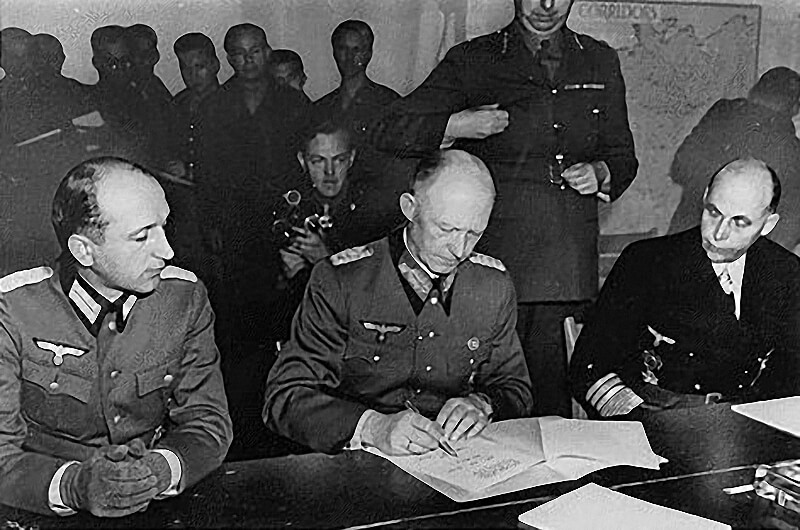
Being told of the Eisenhower unwavering requirements, German President Admiral Doenitz, recognizing the inevitable, authorized the complete and total surrender of all German forces. The next morning, at 2:41 Central European Time on May 7th, General Alfred Jodl, Chief-of-Staff of the German Armed Forces High Command, signed the document containing the phrase, “All forces under German control to cease active operations at 2301 hours on May 8, 1945.”
As May 8th was to be the day that all forces would lay down their arms, that was to be the time of celebrating the end of the war. However, word got out about the signing of the German surrender, meaning there was no stopping jubilation from exploding all over the world, including in Western Europe and the United States.
At the same time as British Prime Minister Winston Churchill was delivering the official announcement of the War’s end to his nation on the afternoon of the 8th, German Field Marshal Wilhelm Keitel was meeting in Berlin with Allied leaders to sign another document of unconditional surrender, this time with Soviet Marshal Georgi Zhukov present … a demand that had been made by Soviet dictator Joseph Stalin.
With the end of hostilities set for 2301 (11:01 PM) Central European Time, the Soviet Union celebrates Victory Day on May 9th, as it would already be after midnight in Moscow.
It was on May 8th that the people of the Channel Islands — Guernsey, Jersey and Sark — finally learned of the war’s end. While historically tied to Great Britain, speaking primarily English and having currency tied to the British Pound, they are located just off the coast of Normandy France. They had been under German occupation since early in the war … by this point, the islanders and the 10,000 German occupying troops were close to starvation. (NOTE: As France itself was being liberated beginning with the D-Day invasion in June 1944, the Allies elected to bypass the islands.) However, even after his country’s collapse, the German commander in charge of the islands, who was fiercely loyal to Hitler, threatened to fight on … but did surrender the following day, May 9s.
As we’ve been detailing, while most German military commanders followed High Command orders, not all did go along. One of those led the German units of the Army Group Centre, controlling the Czechoslovakian city of Prague, made up primarily of SS and Gestapo troops. On May 5th, hearing about what was happening elsewhere, Czech citizens spontaneously began attacking the German occupiers — known as the “Prague uprising” — and were soon joined by Czech resistance forces. They were making good progress on liberating the city, however with fighting continuing on May 9th, the Soviet Army sent overwhelming force — the “Prague Offensive” — against the resisting German troops, who were finally forced to give up on May 11th. Prague was the last European capital to fall to the Allies. Sadly, with Soviet dictator Stalin really wanting to be the “conquering army,” General Eisenhower relented and ordered General George Patton and other Western Allied forces to hold back.
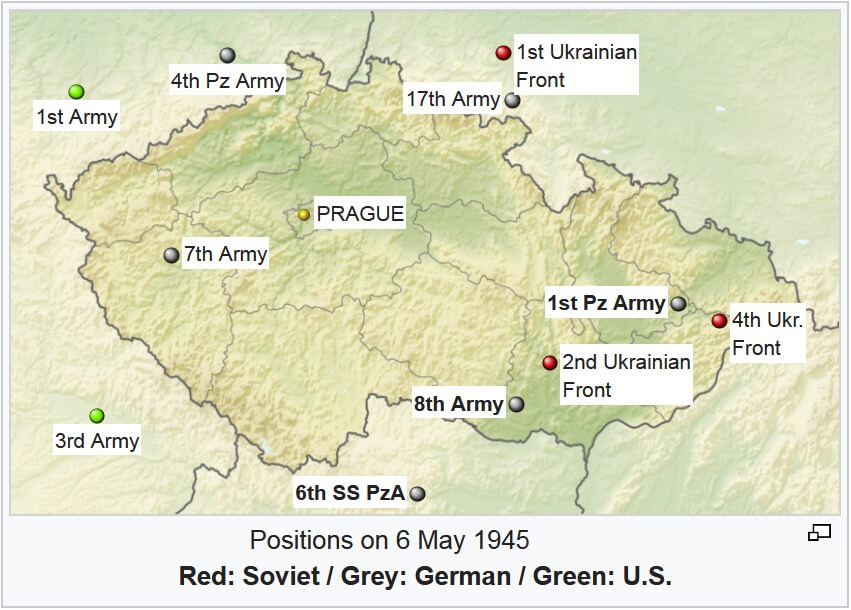
While the Prague Offensive was the last major battle of the War in Europe, there were several small pockets of resistance across what had been the war zone where it’d be from a couple of days to a couple of weeks before the remaining Nazi forces finally conceded to defeat.
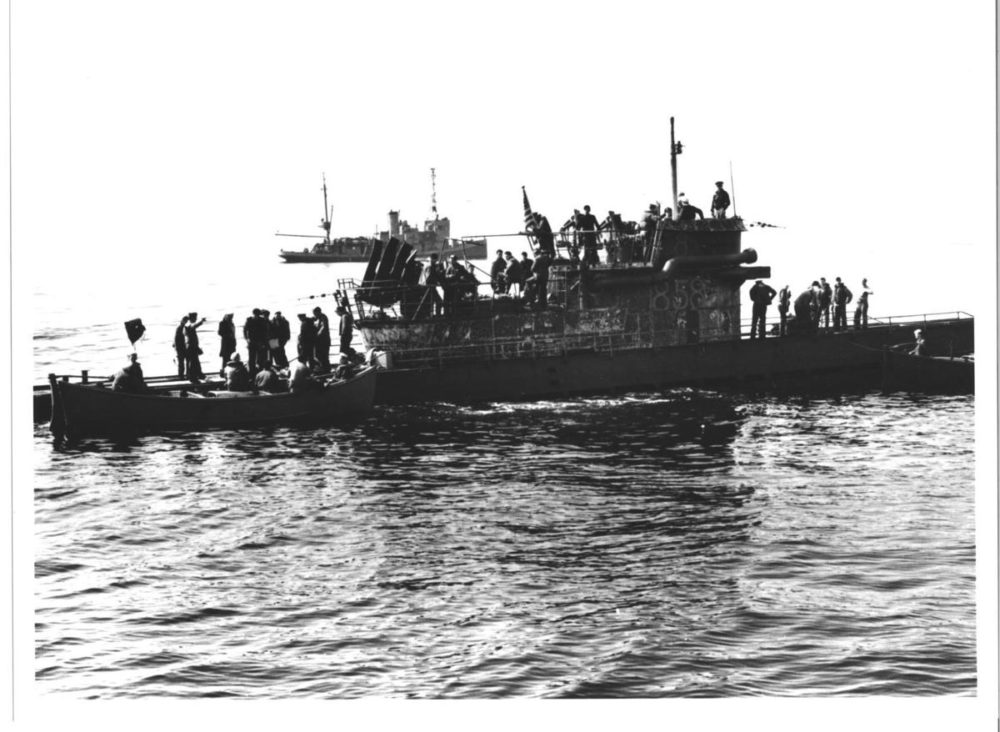
Related to the U-boats which I discussed earlier, there are two stories about U-boat commanders, in the week after Germany had unconditionally surrendered, choosing to give up at U. S. ports. A report dated May 12th tells of a U-boat being seen under escort and flying the black flag of surrender preparing to dock, of all places, in Cape May, New Jersey. A few days later, four U-boats individually arrived and surrendered at the Portsmouth Naval Shipyard in New Hampshire.
Finally, early in the war a few German soldiers had been sent to an island named Svalbard, located well north of the Scandinavian countries and off of the northeast coast of Greenland, to operate a weather station. Unfortunately, they had lost radio contact with the outside world shortly before Germany surrendered; fortunately, they were discovered by some Norwegian seal hunters and were happy to be rescued and surrender … four months later on September 4th, two days after Japan had officially surrendered to fully end World War Two.
And, those were the final days of a Reich that was supposed to last 1,000 years!
In assembling this Musings article, I referenced and resourced from multiple sources:
REFERENCES & SOURCE MATERIALS
A major one is this Wikipedia page, which I found quite detailed and accurate.
While I knew much of this story from my research in preparing the historic newscasts which aired on XM Radio’s 40’s Channel/Savoy Express back in the 2000’s … here’s more related to U-boat attacks in the early days of the War from a New England perspective.
A large book I’ve treasured and read over the past 20 years is a British publication, World War II Day by Day, detailing all six years of the War and written in the form of newspaper stories published as events occurred.
And … numerous other websites which I came across as I investigated individual locations and battles named in various articles.
As Great Britain celebrates the 75th anniversary, here’s a site which presents a great telling of this story in headline form.
Image Credits: FDR – April 11, 1945 – photo by Nicholas Robbins, U-534, Birkenhead Docks, Merseyside, England, Prague Offensive Map courtesy of Wikipedia, U-Boat off Cape May, NJ courtest of Mid-Atlantic Center for the Arts & Humanities
